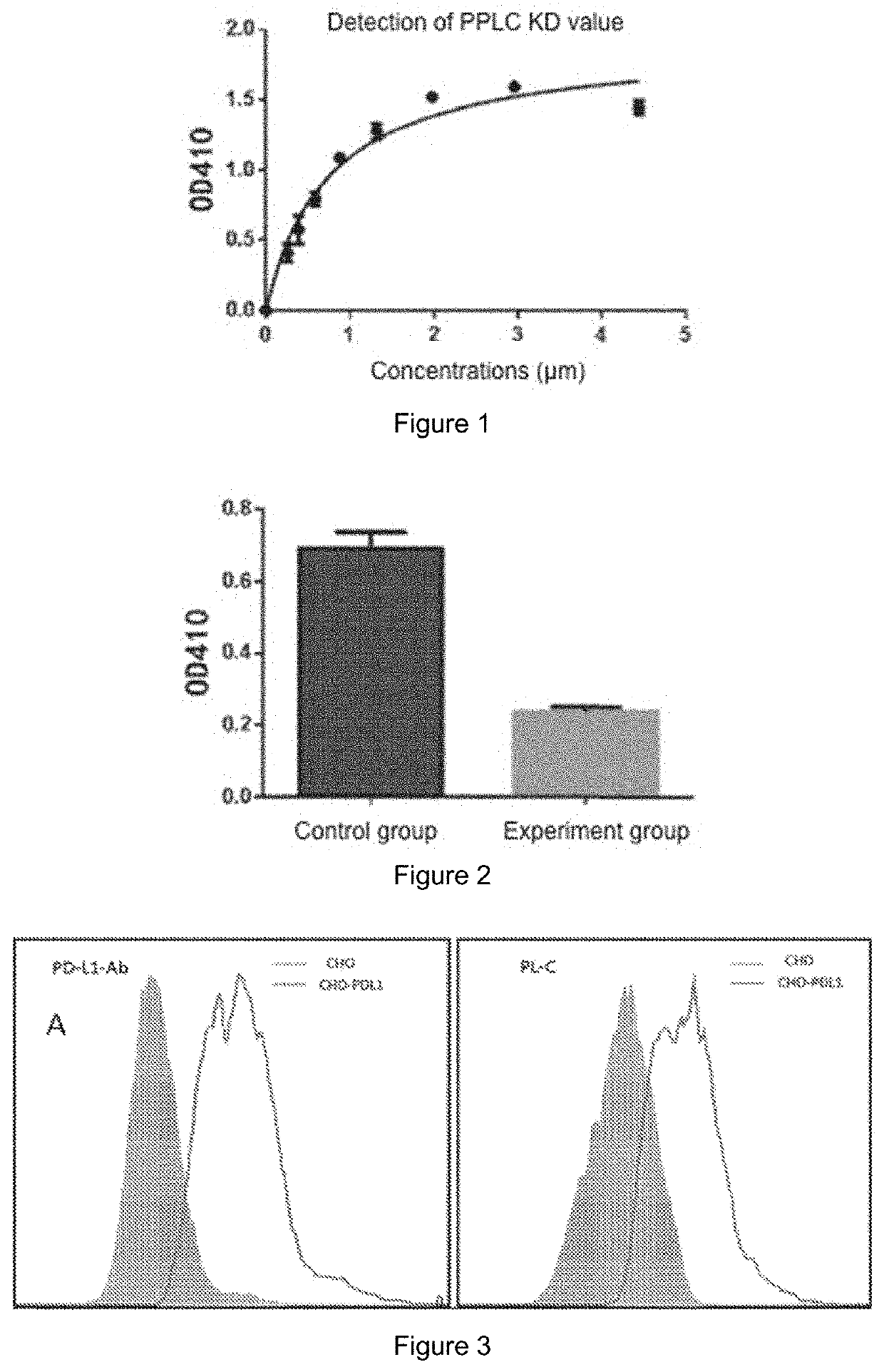Peptide having high affinity for pd-l1 protein and use thereof
a peptide and high affinity technology, applied in the field of biotechnology, can solve the problems of difficult prevention, unsatisfactory therapeutic effect, and human health threats, and achieve the effects of reducing the growth rate of mouse tumors, prolonging the survival time of mice, and breaking the immune tolerance of tumors
- Summary
- Abstract
- Description
- Claims
- Application Information
AI Technical Summary
Benefits of technology
Problems solved by technology
Method used
Image
Examples
Embodiment Construction
[0031]1. Acquisition and modification of peptide sequences
[0032]Desired peptides having an affinity for PD-L1 protein and blocking the affinity of PD-1 / PD-L1 protein were artificially synthesized by a chemical method.
[0033]2. Synthesis and purification of the peptide
[0034]Lys (Dde)-Wang Resin was soaked in DCM for 10 min, and then DCM was drained. 25% piperidine (piperidine / DMF) with 3-fold volume was added into the resin, and then the piperidine was drained after bubbling with nitrogen for 20 min. DMF was added and blown for 1 min. After 6 cycles, DMF was drained, and the resin was detected to be blue by ninhydrin. The product is H-Lys (Dde)-Wang Resin. Three equivalents of Fmoc-Val-OH, HATU, DIEA in DMF were added to the resin. After blowing for 20 min with nitrogen, the DMF reaction solution was drained. DMF was added and blown for 1 min with nitrogen before draining. After 3 cycles, the resin was detected to be transparent by ninhydrin. The product is Fmoc-Val-Lys (Dde)-Wang Res...
PUM
| Property | Measurement | Unit |
|---|---|---|
| OD | aaaaa | aaaaa |
| dissociation constant Kd | aaaaa | aaaaa |
| concentrations | aaaaa | aaaaa |
Abstract
Description
Claims
Application Information
 Login to View More
Login to View More - R&D
- Intellectual Property
- Life Sciences
- Materials
- Tech Scout
- Unparalleled Data Quality
- Higher Quality Content
- 60% Fewer Hallucinations
Browse by: Latest US Patents, China's latest patents, Technical Efficacy Thesaurus, Application Domain, Technology Topic, Popular Technical Reports.
© 2025 PatSnap. All rights reserved.Legal|Privacy policy|Modern Slavery Act Transparency Statement|Sitemap|About US| Contact US: help@patsnap.com


